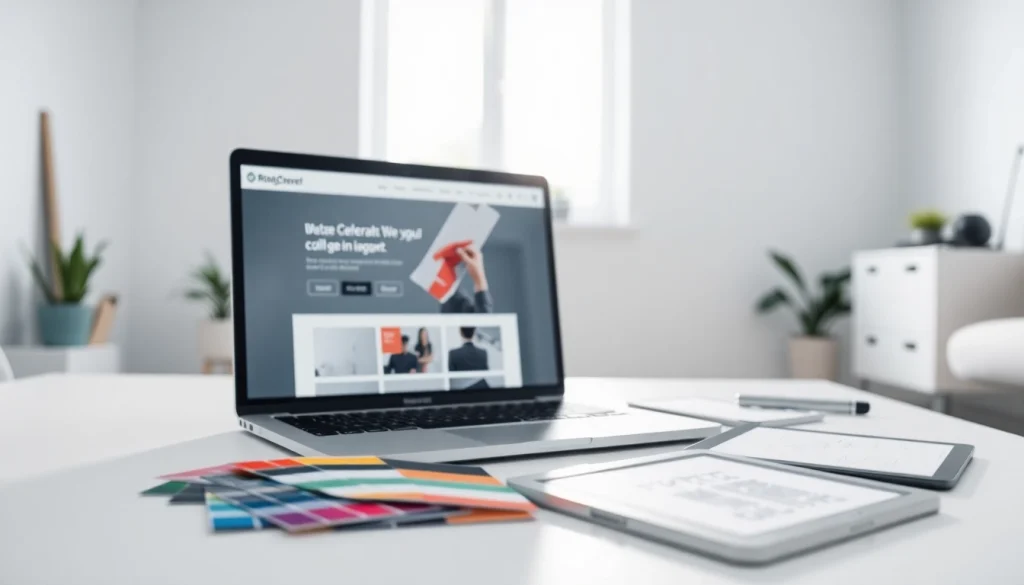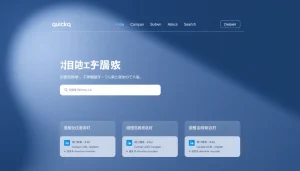
Understanding the Fundamentals of Website Design
What is Website Design?
Website design involves the process of planning, conceptualizing, and arranging content intended for the Internet. This multifaceted discipline covers various aspects, including page layout, color schemes, typography, and how information is structured and presented. A well-designed website not only captivates its audience but also enhances usability and accessibility, fundamentally shaping the user’s experience. By focusing on website design, creators can ensure their platforms effectively communicate their messages and drive user engagement.
Core Principles of Effective Web Design
Effective web design hinges on several core principles, including:
- Usability: A site must be easy to navigate and intuitive to use. Users should instantly understand how to interact with the content.
- Visual Hierarchy: Designers should guide users’ eyes through their content, emphasizing more critical areas and supporting a logical flow of information.
- Consistency: A cohesive look across pages—colors, fonts, and layout—helps reinforce branding and enhances user familiarity.
- Mobile Responsiveness: With a growing number of users accessing the internet via mobile devices, responsive design has become essential to ensure accessibility across diverse platforms.
These principles lay the foundation for creating websites that are not just visually appealing but also functional.
Common Design Challenges in Website Creation
Designing a website can often come with its own set of challenges. Some common issues include:
- Loading Speed: Users abandon sites that take too long to load, making speed optimization critical.
- Cross-Browser Compatibility: A website must render well across various browsers, and ensuring this compatibility can be tedious.
- SEO Optimization: Integrating SEO best practices into design can be challenging but is necessary for visibility.
- User Experience (UX): Striking the right balance between aesthetics and usability can often be a hot seat issue for designers.
Choosing the Right Design Tools for Your Website
Popular Software and Platforms for Website Design
When starting the design process, selecting the right tools is crucial. Here are some popular options:
- WordPress: A versatile content management system that supports various themes and plugins, making it ideal for both novices and pros.
- Adobe XD: Excellent for wireframing and prototyping, allowing designers to push their creativity into functional interfaces.
- Figma: A collaborative design tool that supports real-time feedback, making it perfect for teams.
- Sketch: A vector-based tool tailored for web and mobile app design that is favored among UI designers.
Integrating Design with User Experience (UX)
Design and user experience are inherently linked. While good design can attract users, an excellent UX keeps them engaged. Key elements to focus on include:
- Ease of Navigation: Users should not struggle to find what they’re searching for on the website. A clear and organized structure aids them in this journey.
- Interactive Elements: Incorporating buttons, links, and other interactive features enhance engagement and user satisfaction.
- User Testing: Conduct regular testing sessions to gather feedback from real users and refine the design accordingly.
Using Templates versus Custom Design
The choice between using pre-designed templates and creating a website from scratch every time can significantly influence budget, time, and overall design quality. Templates can expedite the process and often come with built-in responsiveness and SEO optimization. However, custom designs offer unparalleled flexibility in branding and functionality. Weighing these options against project requirements is vital to achieving efficient and effective builds.
Essential Features of High-Quality Websites
Responsive Design and Its Importance
Responsive web design ensures that your website delivers a seamless experience across all devices, from desktop computers to smartphones. A responsive approach emphasizes fluid grids, flexible images, and media queries that dictate how the design adapts. This adaptability improves user retention and satisfaction, making it a non-negotiable aspect of modern website design.
Accessibility in Website Design
Web accessibility involves designing websites that accommodate users with disabilities. Key considerations include:
- Text Alternatives: Provide alt text for images to assist screen readers.
- Keyboard Navigation: Ensure all interactive elements can be accessed via keyboard commands.
- Color Contrast: Maintain sufficient contrast between text and background for readability.
- Clear Language: Use simple, concise language to improve comprehension.
Implementing accessibility features not only complies with legal regulations but also expands your audience reach.
Effective Use of Imagery and Typography
Visual elements play a key role in brand expression and message conveyance. High-quality imagery can evoke emotions and create a lasting impression. Meanwhile, choosing the right typography enhances readability and aligns with the overall branding strategy. In this context:
- Image Quality: Ensure all visuals are high resolution and optimized for fast loading without sacrificing quality.
- Font Pairing: Use complementary fonts that support the overall design while maintaining readability.
- Consistent Style: Maintain a consistent visual language, including color palettes, image styles, and typography, to develop a cohesive feel.
Best Practices for Optimizing Website Design
SEO Strategies Integrated with Design
Savvy designers appreciate the importance of SEO and integrate relevant strategies during the design process. These can involve optimizing image alt texts, ensuring semantic HTML structure, and implementing clean URL structures. Additionally, by incorporating keyword strategies naturally into the content, designers can help users discover the website through search engines.
Coding Standards and Performance Metrics
Adhering to coding standards ensures that websites are clean, readable, and maintainable. Additionally, utilizing tools such as Google PageSpeed Insights assists in identifying performance bottlenecks. Some key performance metrics to track include:
- Page Load Time: The speed at which a page fully renders.
- Time to First Byte (TTFB): The duration between the user’s request and receiving the first byte of data.
- Bounce Rate: The percentage of visitors who leave without interacting with the site.
Monitoring these metrics helps in adjusting designs for better user experiences.
Testing and Iterating Your Designs
The iterative design process is vital for continual improvement. By employing A/B testing, designers can experiment with different versions of page elements and analyze performance based on user interactions. Gathering data on user behavior enables designers to make more informed adjustments that enhance overall UX and conversion rates.
Future Trends in Website Design
Adopting Minimalism and Speed in Design
As digital environments grow more cluttered, minimalism stands out as a design philosophy aimed at reducing distractions while emphasizing essential content. Speed is paramount, and embracing minimalism often translates to faster-loading websites, ultimately leading to improved user experiences and retention rates.
The Role of Artificial Intelligence in Modern Design
Artificial intelligence can significantly enhance various aspects of website design. AI-driven solutions range from automated site builders that generate designs based on content, to personalizing user experiences through data analysis. Furthermore, AI algorithms can aid in dynamic content adjustments and improved analytics for user behavior. Leveraging these technologies can streamline processes and enrich user interactions.
Embracing User-Centric Design for Higher Engagement
User-centric design is more than a buzzword; it’s a movement that emphasizes understanding user needs and behaviors as the core of the design process. Techniques such as user persona development, journey mapping, and regular user feedback loops ensure that the design remains aligned with user expectations. This philosophy leads to higher engagement, better customer loyalty, and improved conversion rates.






